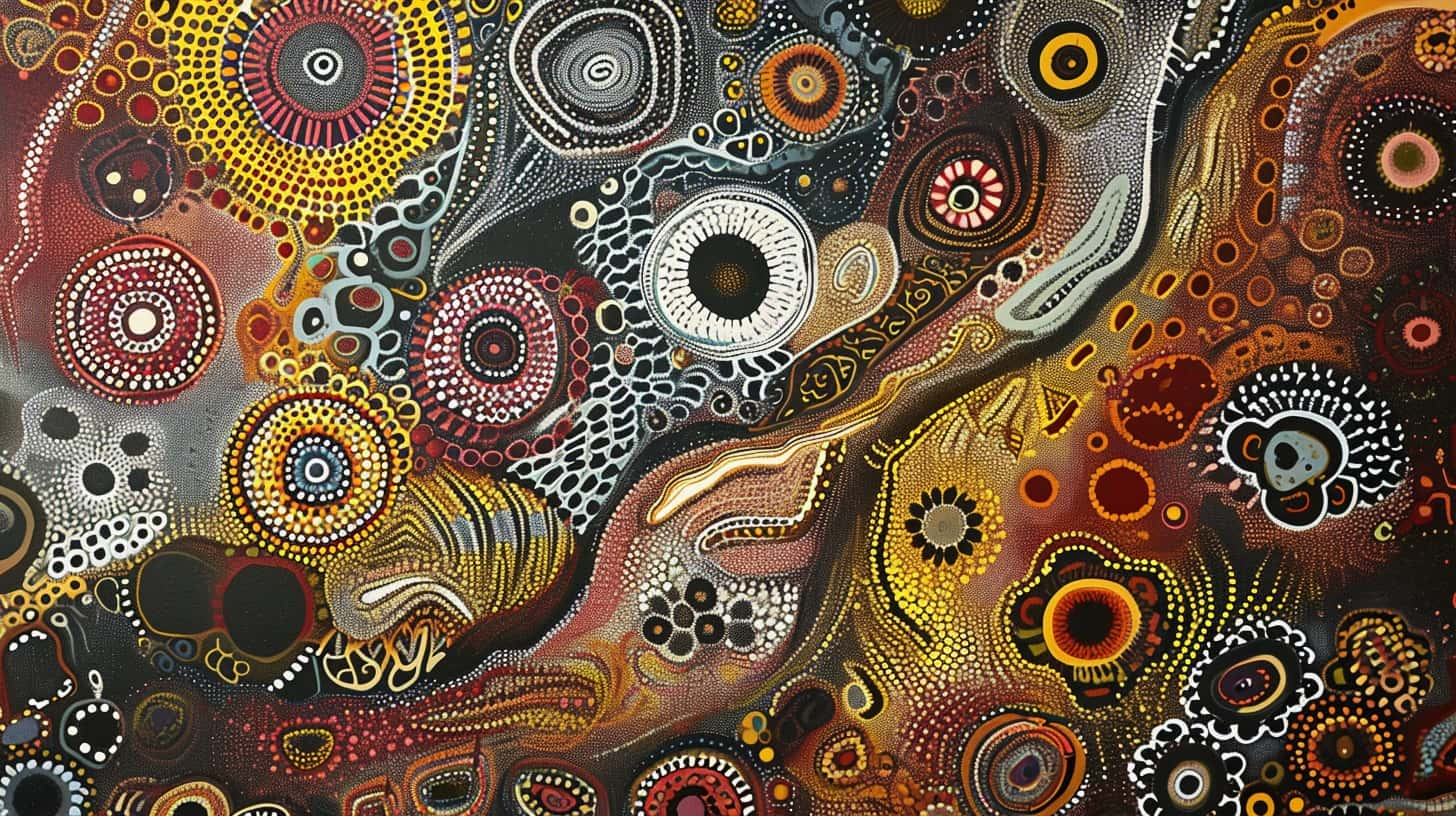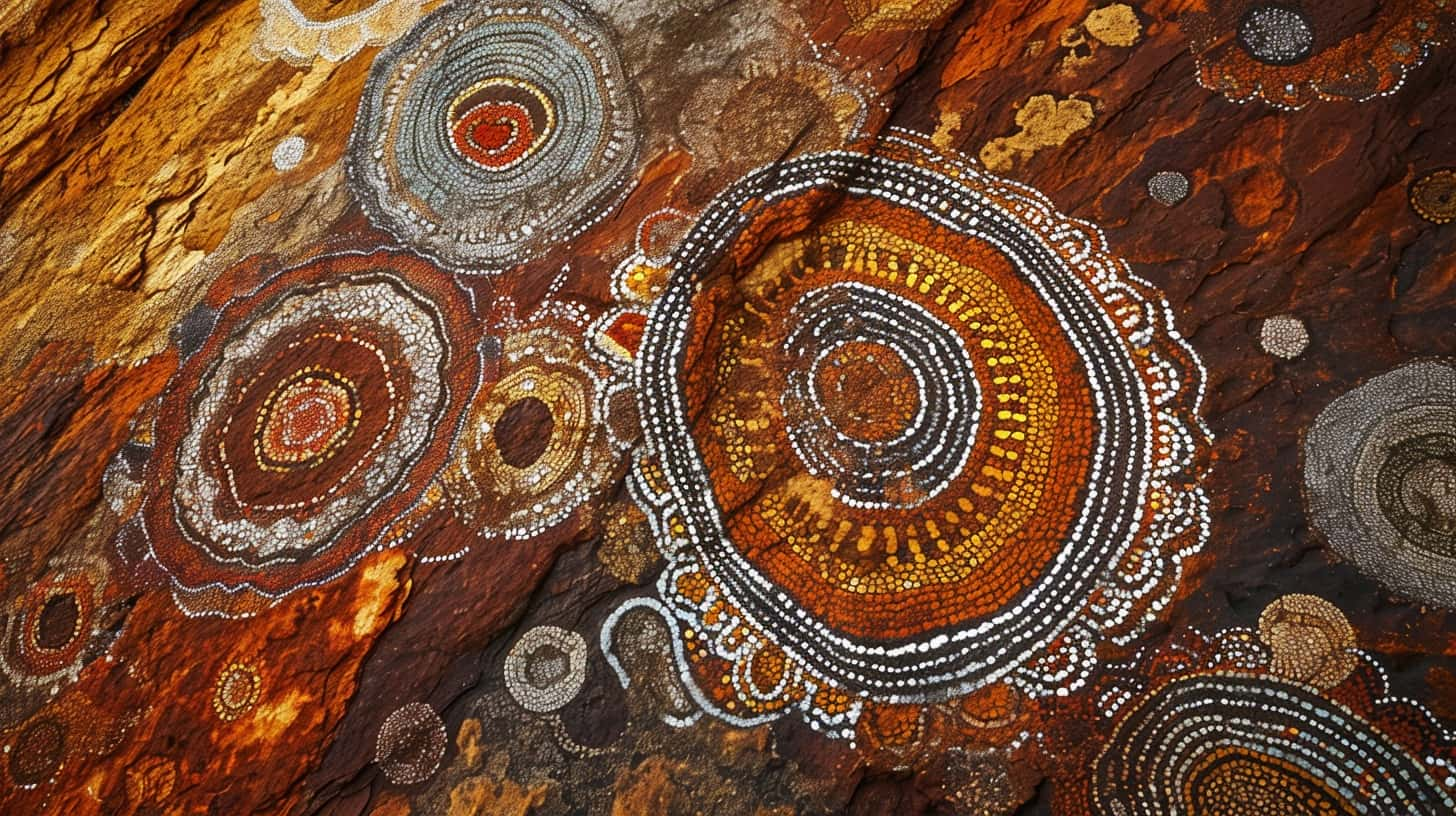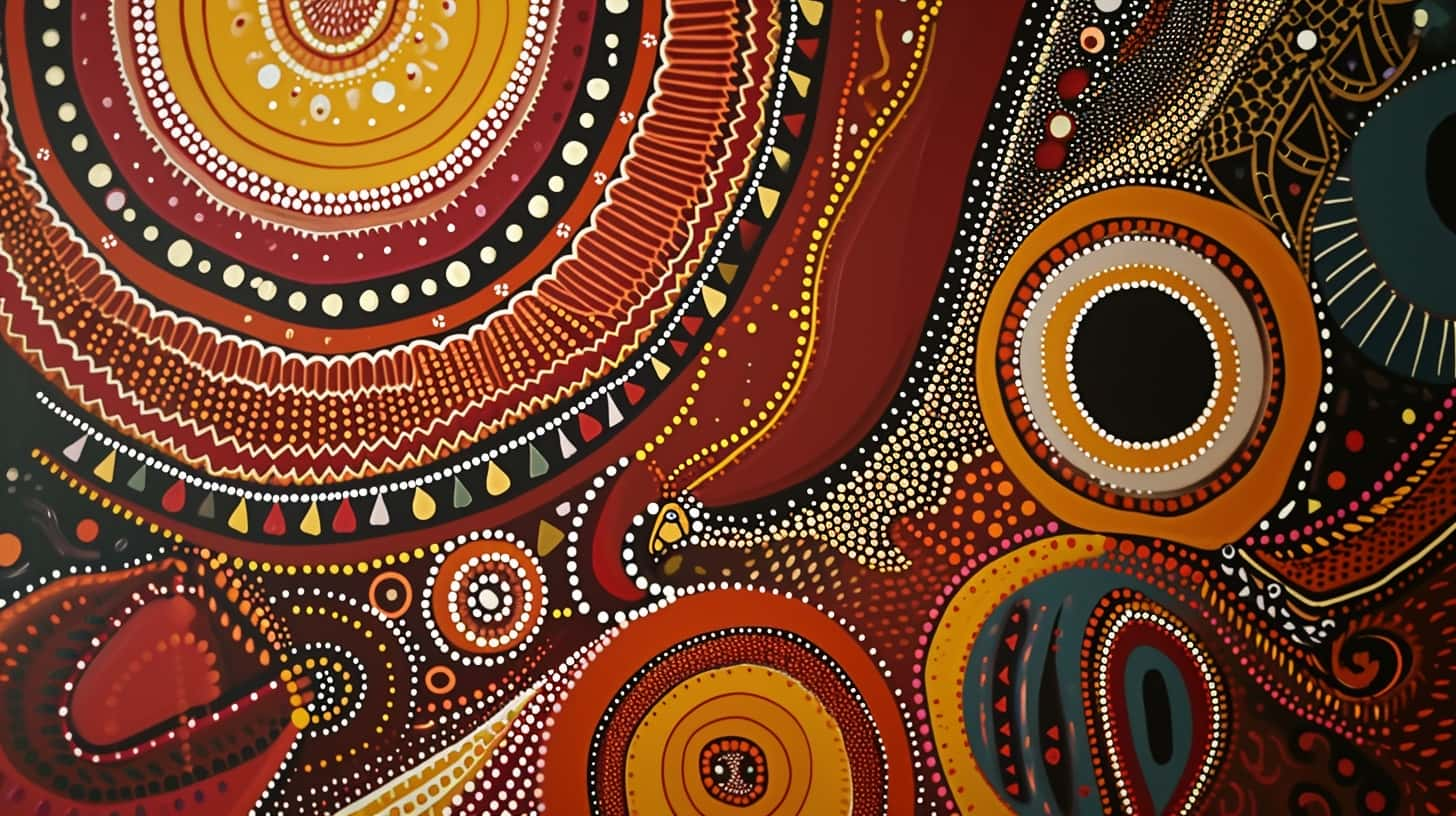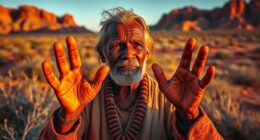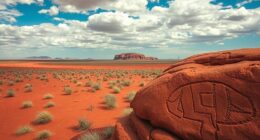Does everyone meet the criteria to be considered indigenous? Let’s delve deeper into this fascinating topic. Indigenous identity is strongly tied to the rich cultural, historical, and ancestral ties of Indigenous communities worldwide. From the groundbreaking Mabo case to global recognition, understanding the diverse identities and experiences of Indigenous groups is crucial. This awareness enhances our appreciation for the significance of Indigenous identity in today’s world.
Recognizing that various kinds of Indigenous groups exist globally helps us comprehend the complex web of histories and traditions woven into their identities. By delving into this subject together, we gain a deeper understanding of how these communities shape our collective history and present-day society.
Defining Aboriginality and Indigenous Identity
Ancestry and Culture
When we ask, “Is everyone aboriginal?” it’s essential to understand that Aboriginality is not solely determined by ancestry. It also encompasses culture, language, and self-identification. For instance, someone may have Indigenous ancestors but may not actively engage with their cultural traditions or speak the native language. On the other hand, an individual who has no Indigenous ancestry can deeply connect with Indigenous culture, values, and traditions.
In some cases, people may discover later in life that they have Indigenous ancestry through DNA testing or family genealogy research. This newfound knowledge can lead them to explore and embrace their heritage more fully. The complex interplay of ancestry and cultural connection demonstrates the multifaceted nature of Aboriginal identity.

Traditional Knowledge and Connection to the Land
Indigenous identity is deeply rooted in traditional knowledge, spirituality, and a profound connection to the land. Many Indigenous cultures have a deep reverence for nature and view themselves as stewards of the environment—a perspective that contrasts sharply with mainstream Western views on land ownership and resource utilization.
For example, many Aboriginal communities around the world hold traditional ecological knowledge about sustainable farming practices, medicinal plants, weather patterns, animal behavior—knowledge passed down through generations via oral tradition. This intimate relationship with the land shapes their worldview and spiritual beliefs.
Acknowledging Diversity Within Indigenous Communities
Defining Aboriginality requires acknowledging the diversity within Indigenous communities worldwide. Each community possesses unique languages, customs,
and belief systems shaped by its specific historical experiences.
Some groups live in urban areas while others maintain a strong connection to rural or remote regions; some prioritize economic development while others focus on preserving ancestral lands.
Historical Perspectives on Colonization and Its Impact
Global Displacement
When we study colonization, we learn about its profound impact on Indigenous peoples worldwide. For centuries, colonization has resulted in the displacement of these communities from their ancestral lands. This displacement has led to significant challenges for Indigenous populations, affecting their cultural practices and traditional ways of life.
The loss of land due to colonization has forced Indigenous peoples to adapt to new environments, often disrupting their established social structures and livelihoods. As a result, many have experienced a sense of disconnection from their heritage and struggle to maintain their unique cultural identities.
Cultural Suppression
One pivotal aspect of understanding the repercussions of colonization is recognizing the cultural suppression endured by Indigenous communities. Throughout history, colonial powers sought to impose their own cultural norms and values onto Indigenous groups, leading to the erosion of traditional belief systems, languages, and customs.
For instance, during various periods of colonization around the world, policies were implemented that prohibited Indigenous languages or religious practices. These oppressive measures aimed at assimilating Indigenous peoples into dominant cultures contributed significantly to the loss of diverse cultural heritages.

Intergenerational Trauma
When examining historical perspectives on colonization’s impact on Aboriginal identity today, it’s crucial for us to acknowledge the concept of intergenerational trauma. The enduring effects of past traumas inflicted upon generations continue to reverberate within contemporary Aboriginal communities.
The deep-rooted impacts stemming from experiences such as forced removal from ancestral lands or systemic discrimination have had far-reaching consequences across successive generations. This intergenerational trauma manifests in various forms including mental health challenges, substance abuse issues, and disrupted family dynamics among Indigenous populations today.
Cultural and Political Identity of Indigenous Peoples
Interconnected Identities
We’ve learned that cultural identity is fundamental to the lives of Indigenous peoples. It encompasses their traditions, customs, languages, and knowledge systems. This cultural heritage is deeply rooted in their history and shapes their sense of belonging and community.
The political identity of Indigenous peoples goes beyond governance; it’s about advocating for self-determination and recognition of their rights. Through political activism, they strive to protect their lands, resources, and autonomy. These efforts are crucial for preserving their unique cultural practices while navigating the modern world.
Cultural and political aspects are closely intertwined in defining Aboriginal identity. The preservation of indigenous cultures often involves asserting political influence to safeguard ancestral lands or secure legal recognition for traditional practices. For instance, the United Nations Declaration on the Rights of Indigenous Peoples acknowledges both cultural and political dimensions by emphasizing self-determination alongside cultural preservation.
Diverse Aboriginal Heritage
Indigenous communities around the world exhibit a rich tapestry of cultures, each with its own distinct language, customs, art forms, spirituality, and social structures. From the Inuit people in Canada to the Maori in New Zealand or the Navajo Nation in the United States – these diverse groups share a common struggle for recognition while celebrating unique heritages.
The term “indigenous” encapsulates a broad spectrum of native peoples who have historically inhabited specific regions long before colonization took place. They possess an intricate web of indigenous knowledge, encompassing sustainable environmental practices, medicinal remedies derived from local flora/fauna, oral traditions passed down through generations.
Let’s consider how different tribal societies across various continents have preserved their identities amidst globalization pressures – whether it’s through revitalizing endangered languages or reclaiming traditional territories as part of broader efforts toward reclamation.
Indigenous Peoples by Region and Their Unique Identities
Rich Diversity
When we explore the topic of Indigenous peoples, it’s essential to recognize that they have distinct identities influenced by their geographic location and cultural practices. Each region has its own history, languages, traditions, and customs that shape Aboriginal identity. For example, the Inuit people in the Arctic have a unique language and lifestyle adapted to extreme cold weather.
Understanding these regional differences helps us appreciate the rich diversity among Indigenous communities. This knowledge allows us to acknowledge and respect the uniqueness of each group rather than making assumptions based on generalized perceptions of aboriginal people.
Cultural Traditions
In Australia, for instance, Aboriginal people are known for their spiritual connection to the land and traditional art forms like dot painting. On the other hand, Native American tribes in North America have diverse cultural practices such as powwows, sweat lodges, or traditional regalia worn during ceremonies.
Similarly, Maori people in New Zealand have preserved their cultural heritage through performing arts like haka dance while also embracing modern ways of life. By learning about these specific traditions from different regions around the world inhabited by Indigenous peoples, we gain a deeper understanding of their way of life.
Indigenous Rights, Human Rights Violations, and Advocacy
Preserving Aboriginal Identity
Preserving indigenous rights is vital for maintaining the unique identity of Aboriginal communities. When these rights are recognized and protected, it ensures that their cultural practices, traditions, and languages remain intact. For example, in Australia, the Aboriginal and Torres Strait Islander Commission (ATSIC) Act of 1989 aimed to empower indigenous Australians by giving them a say in issues that directly affected them.
Advocacy efforts around the world seek to address historical injustices faced by Indigenous peoples. By advocating for equal opportunity commission laws or acts like ATSIC Act in different countries, we can ensure that Aboriginal individuals have access to resources necessary for preserving their heritage.
Addressing Global Human Rights Violations
Unfortunately, human rights violations against Indigenous peoples persist globally. Discrimination towards these communities remains a significant issue in many parts of the world. For instance, reports from Tanzania indicate discriminatory treatment by the government towards its indigenous population.
In this context, special rapporteurs play a crucial role in investigating such violations and advocating for change on behalf of marginalized groups. These advocates work tirelessly to bring attention to instances where governments fail to protect the rights of Indigenous peoples under international conventions or local legislation.
Health Issues and Environmental Injustices in Indigenous Communities
Disproportionate Health Issues
Indigenous communities experience disproportionate health issues due to systemic inequalities. These communities often lack access to quality healthcare, leading to higher rates of chronic illnesses such as diabetes, heart disease, and mental health disorders. Limited resources and inadequate infrastructure make it challenging for Indigenous people to receive timely medical care.
In many cases, the historical trauma inflicted upon Indigenous populations has contributed to intergenerational health challenges. This means that the impact of past injustices continues to affect the well-being of present-day community members. For instance, forced assimilation policies have led to a loss of traditional healing practices and cultural knowledge, further exacerbating health disparities within these communities.
- Limited access to quality healthcare
- Higher rates of chronic illnesses
- Intergenerational impact of historical trauma
Environmental Injustices
Environmental injustices such as pollution and resource extraction significantly impact Indigenous communities. Pollution from industrial activities can contaminate water sources vital for drinking and traditional practices like fishing or farming. Resource extraction projects often encroach upon ancestral lands, disrupting ecosystems essential for sustaining Indigenous ways of life.
The lack of consultation with Indigenous peoples regarding land use decisions further perpetuates environmental injustices. This disregard for their input not only harms the natural environment but also undermines the cultural significance attached to these territories by Aboriginal communities.
- Contamination of water sources
- Disruption of ecosystems through resource extraction
- Lack of consultation on land use decisions
Supporting Indigenous Identity
Addressing both health concerns and environmental injustices is crucial for supporting Indigenous identity. By advocating for improved healthcare services, promoting culturally sensitive approaches to wellness, and safeguarding ancestral lands from harmful developments, we can help preserve the unique identities and traditions within Aboriginal communities.
Recognizing the rights of Indigenous peoples in decision-making processes related to their well-being is an essential step towards rectifying systemic inequalities. Moreover, empowering urban activists who champion indigenous causes plays a pivotal role in raising awareness about these critical issues among broader society.
Legal Definitions and International Approaches to Aboriginality
Varying Definitions
Legal definitions of Aboriginality differ from one country to another, impacting the recognition of Indigenous rights. For instance, in Australia, the “part test” is used to determine a person’s Aboriginal identity based on their proportion of Indigenous descent. This approach has been criticized for its restrictive nature, as it may exclude individuals who strongly identify with their Indigenous heritage but do not meet the specified ancestry criteria.
In contrast, Canada employs a more inclusive approach by emphasizing self-identification and cultural connection rather than strict ancestral lineage. This allows individuals with mixed heritage or those disconnected from their ancestral lands due to historical factors such as colonization to reclaim their Indigenous identity.
The varying legal terms and definitions across different nations can lead to disparities in the treatment and recognition of Indigenous peoples’ rights within each respective country’s legal framework.
International Emphasis
International approaches underscore the significance of self-identification and cultural preservation when defining Aboriginality. By prioritizing an individual’s own understanding of their heritage and connection to their community, these approaches acknowledge that identities are complex and multifaceted.
For example, the United Nations Declaration on the Rights of Indigenous Peoples emphasizes that self-identification is a fundamental aspect of determining one’s status as an Indigenous person. This global standard recognizes that people should have the right to identify themselves as part of a particular group based on shared history, culture, language, or traditions without external interference or imposition.
International efforts advocate for safeguarding traditional knowledge systems and promoting respect for aboriginal customary laws within legal frameworks. These initiatives aim to protect indigenous cultures while ensuring that traditional practices are integrated into broader legal structures without compromising their integrity.
Harmonizing Legal Definitions
Harmonizing legal definitions across countries can contribute significantly towards fostering a more inclusive understanding of Aboriginal identity globally. A unified working definition could help mitigate discrepancies in recognizing indigenous rights while respecting diverse cultural contexts.
The Connection Between Identity, Pride, and Stewardship
Cultural Practices
Our identity and pride are deeply intertwined with our roles as stewards of the land. For us, this connection is not just a concept; it’s ingrained in our cultural practices and traditions. Our community recognition stems from the knowledge passed down through generations.
We honor our ancestors by carrying on their stewardship responsibilities, which are informed by our cultural practices and traditional knowledge. For example, we learn about sustainable hunting and fishing methods that have been practiced by our ancestors for centuries. These teachings instill a sense of pride in us as we continue to preserve the environment while sustaining ourselves.
Strengthening Aboriginal Identity
Recognizing the link between identity, pride, and stewardship strengthens our Aboriginal identity. By understanding how closely these aspects are interconnected, we gain a deeper appreciation for our heritage and ancestry. This recognition empowers us to carry on the legacy left by those who came before us.
For instance, learning about my family’s journey and understanding my father’s role as a steward of the land has strengthened my own sense of identity. It has given me a profound respect for nature and an understanding of my responsibility to protect it for future generations.
Promoting Environmental Sustainability
Our commitment to being good stewards of the land promotes environmental sustainability within Indigenous communities. Through education about traditional knowledge related to environmental conservation, we can pass down important lessons about protecting natural resources.
For example, when I learned about how my family tree has always prioritized sustainable farming practices due to their deep connection with the land, I realized that this approach contributes positively to both ecological balance and community well-being.
Conclusion: Reevaluating Indigenous Identity and Embracing Diversity
Acknowledging Differences
When we talk about Indigenous identity, it’s crucial to understand that not everyone is Aboriginal. There’s a variety of Indigenous communities, each with its own unique culture, traditions, and languages. For instance, the Inuit people have distinct practices and beliefs from the First Nations or Métis. This diversity within Indigenous groups challenges the idea that everyone is Aboriginal.
Embracing this diversity means recognizing that Indigenous identity is not a one-size-fits-all concept. It involves understanding and respecting the differences among various Indigenous communities. By acknowledging these differences, we can move away from the misconception that all Indigenous people share the same experiences and cultural practices.
Fostering Inclusivity
Our society benefits from embracing diversity within Indigenous communities because it fosters inclusivity. When we recognize and celebrate the unique attributes of different Indigenous groups, we create an environment where everyone feels valued and respected. This inclusivity extends beyond Indigenous communities to encompass individuals from all walks of life.
By acknowledging and respecting the diverse expressions of Aboriginality, we demonstrate our commitment to creating a more inclusive society. This fosters a sense of belonging for everyone, regardless of their cultural background. It’s about creating a space where everyone’s identity is acknowledged and celebrated.
Challenging Stereotypes
Challenging stereotypes is an essential part of reevaluating Indigenous identity and embracing diversity. Often, stereotypes oversimplify complex cultures and perpetuate harmful misconceptions. By challenging these stereotypes, we can promote understanding and respect for the rich diversity within Indigenous communities.
When we challenge stereotypes, we open up opportunities for meaningful conversations that lead to greater awareness and appreciation for different cultures. For example, instead of assuming that all Indigenous people live in remote areas, we can highlight the diverse living situations within Indigenous communities, including urban settings.
In conclusion, reevaluating Indigenous identity involves acknowledging the diversity within Indigenous communities. Embracing this diversity fosters inclusivity and respect for different expressions of Aboriginality. By challenging stereotypes and promoting understanding, we can create a more inclusive society.
Frequently Asked Questions
Is Aboriginal identity the same across different regions?
Aboriginal identities vary across regions due to unique cultural, historical, and political factors. Each indigenous community has distinct traditions, languages, and customs that shape their specific identity.
What are some common health issues faced by Indigenous communities?
Indigenous communities often face health disparities such as higher rates of chronic diseases, mental health challenges, and limited access to healthcare services. These issues stem from historical injustices and environmental factors.
How do international approaches define Aboriginality?
International approaches define aboriginality based on a combination of cultural heritage, self-identification, and recognition by indigenous communities. This recognition acknowledges the diverse ways in which individuals connect with their ancestral lands and traditions.
Why is it important to reevaluate Indigenous identity?
Reevaluating Indigenous identity allows for a more inclusive understanding of diverse cultures and histories. Embracing this diversity fosters greater respect for indigenous peoples’ unique perspectives while challenging colonial narratives.
What role does pride play in the stewardship of Indigenous land?
Pride serves as a powerful motivator for indigenous peoples to protect and preserve their ancestral lands. It fuels a sense of responsibility towards maintaining cultural heritage while advocating for environmental sustainability.
Nayeli is our dedicated Editor in Chief, bringing her passion for words and keen editorial eye to every piece of content we produce. With years of experience in the field, she ensures that every article and publication meets the highest standards of quality and clarity. Nayeli’s commitment to storytelling and her deep understanding of our mission make her an invaluable leader in our team.



